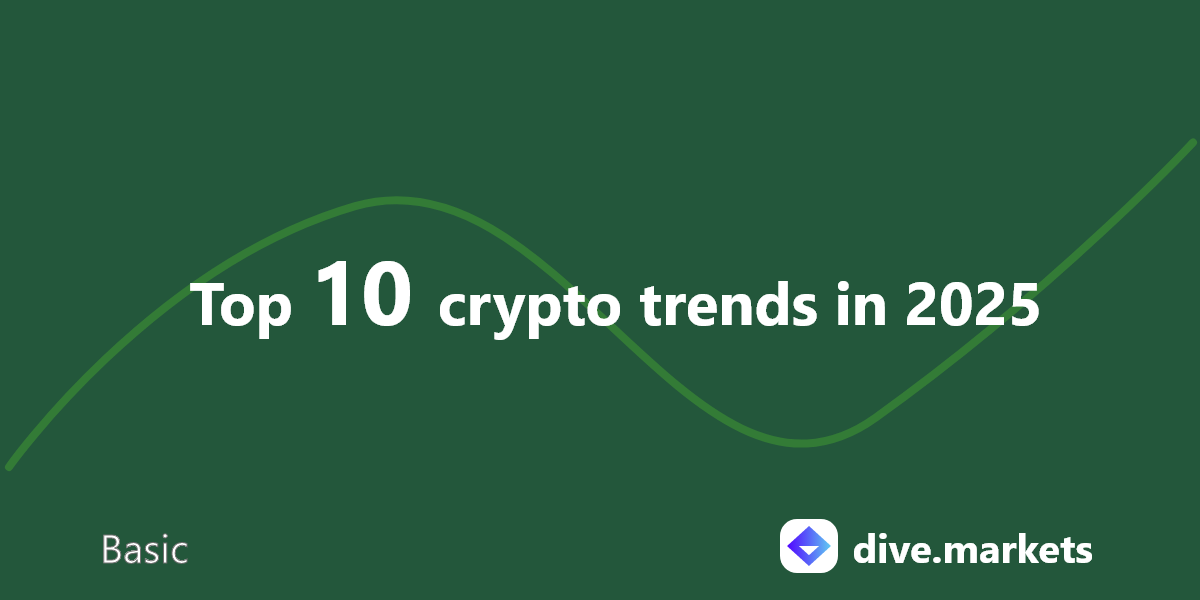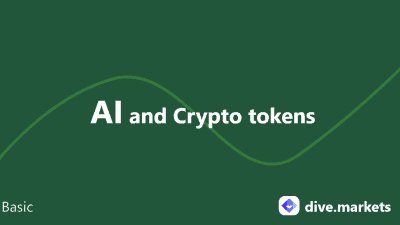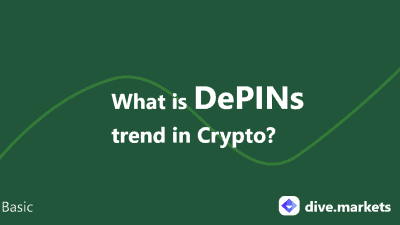As we approach the first quarter of 2025, it is crucial to undestand the crypto trends and narratives which could dominate for the next years.
This article will briefly illustrate the top 10 trends in the cryptocurrency space, which are gaining increasing attention from investors, developers and enthusiasts all over the world. These list non-exhaustive and it is intended to provide a short description. Trends are not sorted by relevance.
1) Artificial Intelligence (AI) Narrative
Among the crypto trends, Artificial intelligence (AI) is a rapidly expanding field with the potential to transform how we live, work, and connect with one another. In the world of cryptocurrency, AI can enhance everything from security and scalability to user experience and market forecasting. This opens up new possibilities for developers, offering a revolutionary platform to create applications and services that could lead to more efficient and transparent systems. With the right data, AI can be trained to tackle tasks ranging from identifying investment opportunities to detecting illicit activities.
AI tokens are cryptocurrencies designed to power AI-driven projects, applications, and services, such as decentralized AI marketplaces, AI-powered portfolio management, predictions, image generation, pathfinding, autonomous organizations, and more. These tokens may grant governance rights to holders or be required to process transactions on the AI platform.
2) Real World Assets (RWA) Tokenization
Tokenized RWA are tangible assets tokenized on the blockchain. Tangible assets are physical items that exist in the real world, such as real estate, commodities, art, and even U.S. Treasuries. These assets make up a significant portion of global financial value. For instance, global real estate was valued at $326.5 trillion in 2020, while the market capitalization of gold stands at $12.39 trillion.
Clearly, real-world assets play a massive role in traditional finance. However, they remain largely untapped within the DeFi space, aside from fiat-backed stablecoins like USDT and USDC. This presents an opportunity to integrate real-world assets into DeFi, boosting available liquidity and to leverage for investment yields. Additionally, these assets could provide more stable returns, being less influenced by the volatility of cryptocurrencies. There’s also growing interest in tokenizing U.S. Treasuries on the blockchain, offering investors a low-risk way to generate yield.
RWA tokenization is said to be one of the biggest crypto trends for the following years.
3) Decentralized Physical Infrastructure Networks (DePIN)
Decentralized Physical Infrastructure Networks (DePIN) leverage blockchains and token incentives to decentralize real-world infrastructure. In these networks, individuals provide physical resources across various sectors contributing to a more distributed infrastructure model.
DePINs offer cost-efficient pricing by basing fees on the actual costs of private providers. These networks are more affordable and fair, designed to provide the best service at the lowest cost. Anyone can contribute or use resources in a DePIN, with no restrictions or negotiations. Providers also have flexibility in how they use their infrastructure. Providers are incentivized to earn passive income from otherwise unused resources.
4) Privacy in Blockchain Technology
Privacy is emerging as a key driver of the next wave of blockchain innovation. Projects centered around zero-knowledge proofs (ZK), ring signatures, and other cutting-edge cryptographic methods are gaining momentum. These technologies seek to deliver anonymity and privacy, essential for widespread adoption in privacy-sensitive sectors such as finance and healthcare.
There are different ways to achieve privacy on the blockchain. There are blockchains which support privacy natively and platforms which adds privacy on public blockchains. Privacy narrative is growing because it is demanded by people performing on-chain activities. This is among long-run top crypto trends.
5) GambleFi Narrative
GambleFi is a term used for decentralized applications offering crypto-based betting services. It represents the shift towards bringing online gambling onto the blockchain to enhance user experience through increased transparency and fairness, while avoiding many of the challenges associated with traditional gambling models.
GambleFi protocols are blockchain-based platforms for online betting that offer two main benefits: transparency and ownership. Users can verify the fairness of their bets through cryptographic proof, ensuring that results are tamper-proof. Additionally, participants can own tokens that grant them a share of the platform’s revenue. The defining feature of GambleFi trends compared to traditional crypto casinos is its focus on tokenomics, where stakeholders earn a portion of the generated income.
6) GameFi Narrative
GameFi combines blockchain technology, decentralized finance (DeFi), and gaming into a unified concept. It encompasses play-to-earn games that reward players with economic incentives for their participation. Within the GameFi ecosystem, players engage with cryptocurrencies, non-fungible tokens (NFTs), and blockchain to immerse themselves in a virtual gaming world.
Players can earn rewards by completing tasks, competing in battles, and advancing through game levels. Additionally, they can transfer their in-game assets to trade on cryptocurrency exchanges and NFT marketplaces.
7) Memecoins Narrative
Memecoins are tokens inspired by memes – humorous images or text that can be adapted to various contexts. Unlike traditional cryptocurrencies like Bitcoin and Ethereum, memecoins are all about having fun.
The value of a meme coin is driven by the strength of its community and its association with a particular meme. For instance, dogwifhat uses its mascot in various hats on its social media page, adding a playful twist to their branding.
Meme tokens are highly volatile and can lead to substantial profits or losses. Therefore, memecoins should be handled with caution.
8) Scalability solutions
In the cryptocurrency world, developers are trying to solve the scalability issue and improving the overall perfomance by using different layers.
In the actual state of the world, there are the following layers:
- Layer-0: L0 provides the foundational infrastructure and interoperability between blockchains.
- Layer-1: L1 is the base layer that handles core functions like consensus and security but often faces scalability issues.
- Layer-2: L2 builds on Layer-1 to address scalability by processing transactions off the main chain, reducing congestion and fees.
- Layer-3: L3 consists of applications and services built on Layer-2, focusing on user interaction and functionality, benefiting from the enhanced scalability of the underlying layers.
It is essential to keep track of this trend in order to understand better the dynamics and innovation in the blockchain field.
9) LSD – Liquid Staking Derivatives
In the case of ETH: Liquid Staking was developed to enable users to receive a receipt token, known as a Liquid Staked Derivative (LSD), when they stake ETH with a liquid staking provider.
An LSD is a liquid token, similar to other crypto tokens in that it is fully fungible, transferable, and fractional.
LSDs essentially unlock the liquidity of staked ETH by providing a token with a value comparable to the underlying staked ETH, which is temporarily locked. This allows users to utilize their staked ETH in DeFi activities such as selling, providing liquidity, lending, or using it as collateral, thereby earning additional yields on top of their staking rewards.
10) DeFi & PriFi
Decentralized finance (DeFi) is a network of financial applications built on blockchain technology. Its goal is to create an open-source, permissionless, and transparent financial system that is accessible to everyone and operates without a central authority. Users have full control over their assets and interact with this ecosystem through peer-to-peer (P2P) decentralized applications (DApps).
The main advantage of DeFi is its ability to provide easy access to financial services, particularly for individuals who are excluded from traditional financial systems. Additionally, DeFi’s modular framework allows for interoperability between applications on public blockchains, potentially leading to the creation of new financial markets, products, and services.
PriFi is a subcategory of DeFi, which adds privacy feature to the DeFi space.
Conclusion
2025 is shaping up to be a pivotal year for cryptocurrencies. As these technologies mature, they promise to redefine how we think about and interact with digital currencies and blockchain technology.



